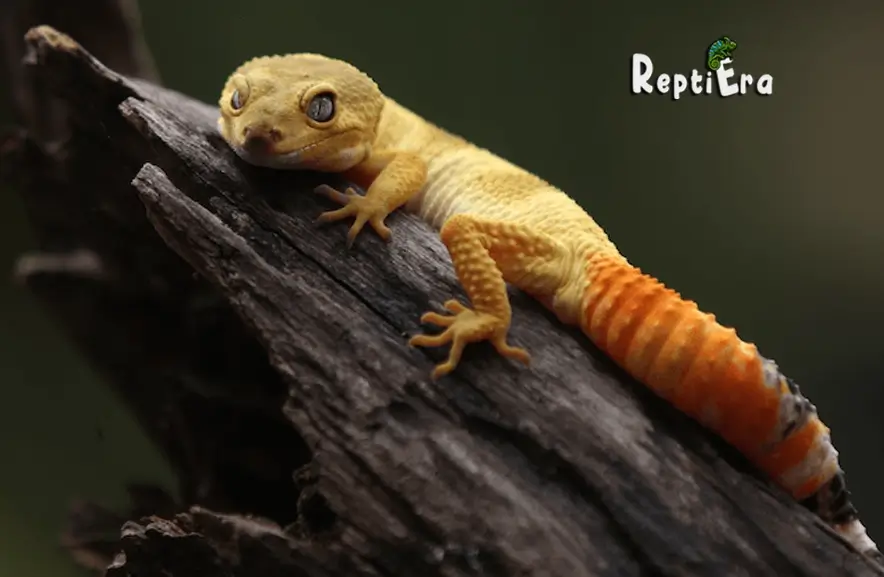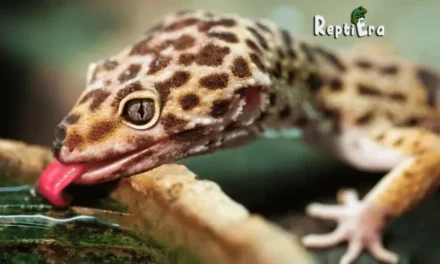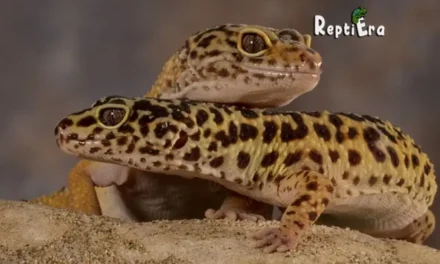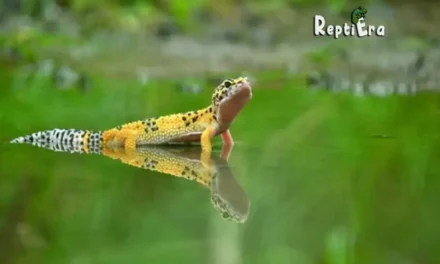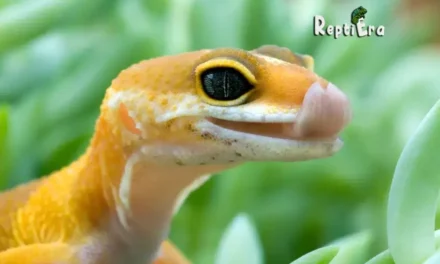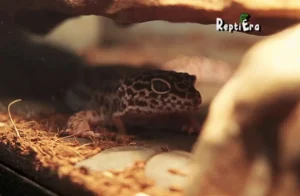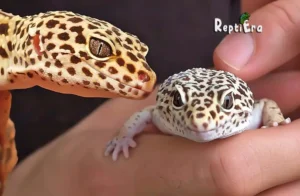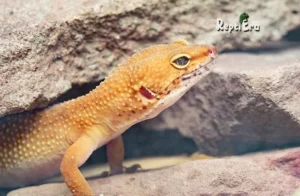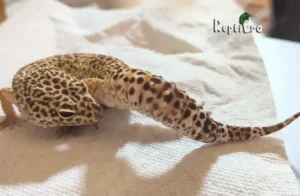Owning a leopard gecko is a genuinely rewarding experience. These charming and stout lizards, with their wide grins on their faces and an inquisitive nature, captivate many. Most reptile owners would agree that something is going on behind those expressive eyes of our scaly companions.
This observation leads to a long-standing debate within the reptile community: do reptiles feel emotions? Taking a step further, can they experience boredom? Providing just the basic needs might not be enough.
Do they need enrichment to truly thrive in captivity? Research on reptile sentience is somewhat limited, but scientists are finding that lizards indeed benefit from socialization and mental stimulation. They may not experience a range of emotions like humans, but it’s important to rule out stress and health problems before assuming that your pet gecko is bored.
Do Leopard Geckos Get Bored?
As we are hashing out this topic, leopard gecko owners should consider how to enrich the lives of their geckos. It’s important to first decide on a definition of boredom and its causes. From my personal experience, I’ve noticed that when their environment lacks stimulation, leopard geckos can appear less active or interested in their surroundings.
This doesn’t necessarily mean they are experiencing human-like boredom, but it does indicate a need for a more engaging habitat. A variety of hideouts, climbing structures, and even occasional gentle handling can make a significant difference. It’s about understanding and catering to their natural behaviours, ensuring they have a stimulating environment that reflects their wild habitat, thus enriching their captive lives.
Table of Contents
What Is Boredom For Animals?
Tackling the question of boredom in leopard geckos presents a challenge. This feeling is elusive and difficult to define, often marked by a lack of something – whether it’s stimulation, socialization, or fun.
As Dr Charlotte Burn points out, key aspects of boredom can be measured scientifically, such as the avoidance of monotony, an inability to maintain wakefulness, and time perceived as dragging. In animals, boredom can lead them to seek almost anything to avoid this state. Recognizing boredom in other species, especially social animals, is different from understanding reptiles, like asocial species such as leopard geckos.
Labelling their behaviour as experiencing boredom might be a misinterpretation of them simply relaxing or engaging in time-sensitive activities. It’s crucial not to dismiss these behaviours without consideration. Determining if a gecko is bored allows a gecko owner to confidently rule out other issues like injury, illness, or stress before concluding that their reptile is experiencing boredom.
So, Can Leopard Geckos Get Bored?
Scientific studies on animal boredom have often overlooked reptile boredom, treating it as a bigger issue. Traditionally, reptiles have been left out in legislation and research that primarily focuses on mammals. However, recent studies conducted on reptile sentience are reshaping our knowledge. A pivotal 2019 study discovered that reptiles, previously assumed to be incapable of complex emotions or states like anxiety, stress, distress, excitement, fear, frustration, pain, and suffering, might actually have them.
Note: Various articles have explored evidence pointing to their capacity to feel pleasure and other emotions. Such research has begun to shed light on the concept of boredom in reptiles and paints a new picture of a lizard’s emotions. It’s now becoming more possible to consider that leopard geckos, along with other lizard species, could indeed get bored.
Why Do Leopard Geckos Get Bored?
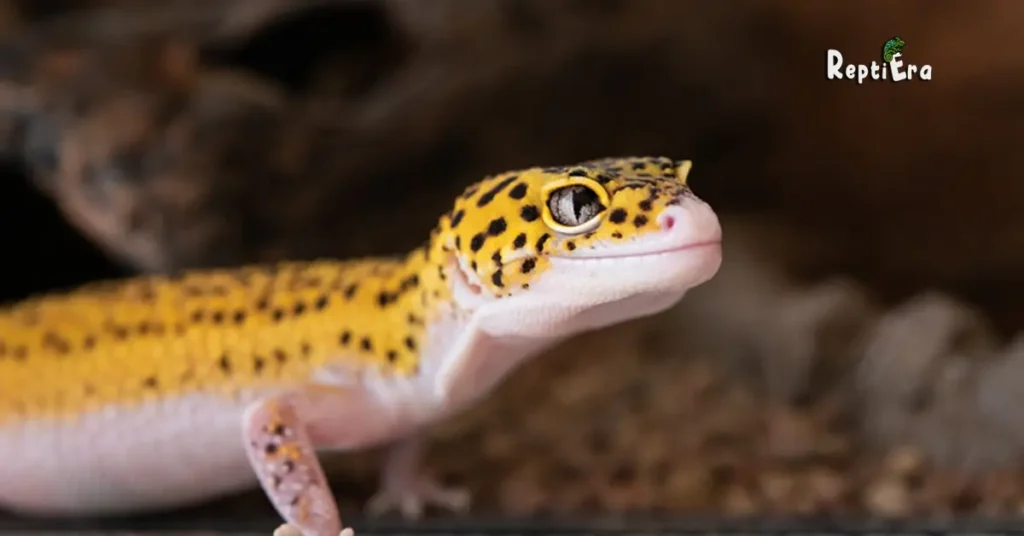
In the first few months of their lives, lizards like leopard geckos, unlike their siblings in the family group of socialization, don’t have the same opportunity to learn survival skills or the ability to distinguish kin from strangers. This lack of early socialization, seen in young birds and mammals, impacts their ability to recognize specific individuals, an aspect of sentience.
For instance, American crocodiles and five-lined skinks exhibit devoted parental behaviour, protecting their nests and offspring. However, social isolation in their early lives can lead to negative physiological effects, such as a decreased lifespan, poor performance in cognitive testing, increased anxiety, and abnormal social behaviours.
These trends are supported by a University of Sydney study on veiled chameleons, an asocial reptile. When raised in isolation, they became more submissive in conflict, displayed less vibrant colour, and showed slower foraging behaviours compared to their socialized counterparts.
Note: Leopard geckos traditionally prefer to be alone except during the mating season, but they still require stimulation to develop and lead fulfilling lives. If their environment doesn’t provide adequate engagement, your pet lizard might start feeling less excited, lacking the experience of excitement in activities like eating. This indicates their capacity to feel bored.
An enclosure that is not stimulating enough can lead to a leopard gecko displaying signs of boredom. From personal experience, I’ve observed that leopard geckos, when provided with a variety of hiding spots, climbing areas, and occasional interaction, exhibit more curiosity and activity, suggesting that they do appreciate and benefit from an environment that caters to their instinctual needs.
This understanding challenges the common perception that leopard geckos always prefer isolation and reveals the importance of creating a stimulating habitat for them.
Also Read:
If It’s Not Boredom What Is It?
Anthropomorphism, the attribution of human needs and characteristics to an animal, is often seen on the internet where well-meaning reptile owners might be misinterpreting their gecko’s behaviour through the lens of anthropomorphism. Expressions like “my gecko is screaming because it’s lonely” or “it snuggles when sad or stressed” are common, yet these interpretations can be misleading.
Unlike social animals such as human beings, leopard geckos do not have the same range of expressive body language, and when we assign meaning to their actions based on our norms, we risk misinterpreting their true state. The problem arises from a universal application of species-specific behaviours; what’s normal for a human may not be for a leopard gecko.
As reptile owners, we must apply our observations within the context of the norms of the species, filtering our interpretation of leopard gecko behaviours through a more species-appropriate understanding rather than human norms.
Also Read: WHY LEOPARD GECKO CLOSING HIS EYES
1. Incorrect Temperature or Humidity
If your gecko appears still or listless, it might not necessarily be bored; the reality could be uncertain health issues or stress responses related to temperature and humidity in their tank.
Leopard geckos thrive in normal ranges; if too cold, they become sluggish, conserving energy. Understanding the natural history of the species is crucial—they originate from desert regions and rocky, dry grasslands in Southeast Asia, Nepal, India, the Middle East, Afghanistan, Pakistan, and Iran.
Tip: Ideally, the cool side of their habitat should be between 70-80 degrees Fahrenheit, and the warm side around 80-85 degrees. As semi-desert reptiles, they require environments that are not too humid, typically around 30-40%; too much humidity can lead to issues like dehydration, which is more common in tropical species. Monitoring and maintaining these conditions is essential for their well-being and can prevent stressful behaviours that might be mistaken for boredom.
2. Illness or Injury
When determining what a gecko needs, it’s crucial to start with the basics. An urgent explanation for a gecko’s lack of activity, often mistaken as boredom, could be that it is ill or injured, requiring immediate attention. For a leopard gecko owner, it’s important to maintain regular veterinary appointments to ensure their pet is unwell, having an existing file and a rapport with a local, exotic veterinarian can save valuable time in emergencies, assuring that your gecko receives the best care possible.
3. Stress or Fear Response
When trying to rule out illness or injury, it’s vital to research leopard gecko stress responses. A well-meaning reptile owner may believe their gecko is screaming due to loneliness, but unlike typically vocal animals, leopard geckos might only chirp or make sounds when frightened or threatened, possibly when mishandled; this can be the real cause of their vocalization.
Caution should be exercised in interpreting their facial structure; though they may appear to be smiling or happy, they cannot smile. Their perpetual expression is due to their broad, flat head, wide mouth, and the placement of their eyes and nose on their face, which might melt your heart but does not necessarily reflect their feelings. In animal husbandry, particularly reptile husbandry, science and empirical data should be prioritized over assumptions about their feelings.
The reality of their needs and wants offers many possibilities to consider. For instance, a leopard gecko clawing at the glass of their terrarium or attempting to get out might not be bored but could be disinterested in their environment, signalling the need for a change.
How To Keep Away Your Leopard Gecko From Being Bored
Enrichment for a captive animal like a leopard gecko significantly enhances their quality of life, incorporating both behavioural and environmental stimuli. Behavioural enrichment for captive animals, in hopes of improving their psychological and physiological well-being, allows them to perform natural behaviours.
Tip: There are creative ways to provide activities and toys, based on species-specific needs that are safe for a reptile. However, it’s important to remember that what’s enriching for one species might be dangerous for another.
For leopard geckos, this can include adding various textures and hiding spots in their enclosure, offering a range of temperatures within their habitat, and occasionally introducing safe, interactive objects to stimulate their curiosity. These efforts can go a long way in preventing boredom and enhancing the overall health and happiness of your pet leopard gecko.
Invest Into Their Enclosure
To keep a leopard gecko creatively engaged and encourage natural behaviours, enrichment is key. This includes activities like foraging for insects, digging, exploring, and climbing over obstacles that are not too tall. Providing an enclosure with adequate hides and climbs is great, but taking it to the next level can involve creating a bioactive enclosure.
This type of setup includes safe plants and an insect cleanup crew, adding a dynamic and interactive element to their habitat. Such an environment not only stimulates their natural instincts but also provides a more engaging and fulfilling living space, helping to prevent boredom and ensuring a happier, healthier pet.
Exercise Is Key
For leopard geckos, maintaining a different and healthy life involves more than just food and water; exercise plays a crucial role in helping them feel better and adds a bit of entertainment and fun.
A simple yet effective way to let them run around is by using a bathtub, providing them with freedom and the opportunity to work out their body. If the tank isn’t big enough for ample space to stretch their legs, allowing them to free roam in a safe area of your home under direct supervision can be a great source of enrichment.
This active time outside the enclosure offers sensory experiences with new sights and smells. When exploring a room, always check their belly; if it’s cold, it’s time to put them back to warm up, as they can become sluggish.
Make sure there’s no high ground to prevent falling and hurting themselves, considering they are ground-dwelling species and not as acrobatic as their tree-dwelling relatives. This kind of exercise and exploration can contribute to their feelings of being happy, especially if they’re in a bigger terrarium that might otherwise feel cramped and restrict their ability to move around freely.
Related Post: HOW FAST IS A LEOPARD GECKO
Offer A Diverse Diet
A diverse diet consisting of live insects gives a leopard gecko the chance to perform foraging behaviours similar to those in the wild, making food-based enrichment both an easy and rewarding way to entertain your gecko.
The enjoyment they get from watching and then chomping on a mealworm or an unsuspecting cricket is notable. An important rule to follow when devising enrichment activities involving diet is to incorporate about 50% of the activity into hiding food to encourage foraging activity.
However, account for the possibility that they might not find a portion of their food and become disinterested. After each session, note if all the food was found and eaten to avoid the expense of overfeeding while still meeting their basic husbandry needs.
Eating
For Geckos, receiving the right nutrients and vitamins is essential not just to survive but also to stay occupied and healthy. A calcium-packed meal keeps them not only hungry but also happy and satisfied.
Providing proper food is crucial; a gecko that is sick or sluggish due to a lack of essential nutrients can often be mistaken for boredom. Ensuring that their meals are loaded with the body needs they require is a way to ensure they remain healthy and stress-free. This aspect of care is often overlooked, but it’s vital for their overall well-being.
Bonding
Bonding not only fosters a stronger connection with your gecko but also provides them with activities beyond just lounging all day.
For new gecko owners, it’s important to start forming a bond right away. The initial one to two months of ownership are essential for this bonding process. You can:
- Hand-feed them.
- Maintain a consistent routine.
- Create recognizable sounds to signal your presence as a friendly entity.
- Opt for a terrarium with a front opening.
- Restrict handling by others for the initial months to affirm your primary role.
- Occasionally remove the gecko from its tank.
- Communicate with your gecko.
- Allow the leopard gecko to explore by crawling on you.
For not new and seasoned leopard gecko owners alike, it’s important to understand the value of taking out your gecko from its tank, holding it, and talking to it.
Allowing it to crawl on you is a gentle way to further grow your relationship, building trust over the duration of your gecko’s life. This bonding time can not only build a closer relationship between you and your pet but also serve as a great stress reliever for both. It’s particularly comforting when you’re feeling under the weather. Engaging in such interactions with your gecko can enhance its quality of life and contribute to its overall well-being.
Related Post: HOW TO BOND WITH YOUR LEOPARD GECKO
Sleeping
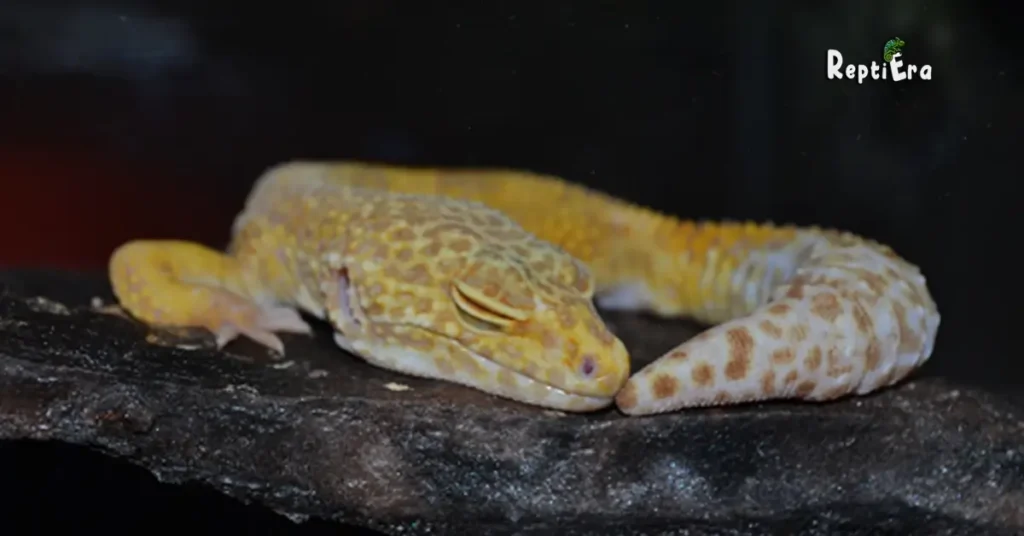
When leopard geckos have trouble falling asleep, much like humans, it could indicate something in their tank is bothering them. Poor living conditions or stress can lead to a lack of sleep, causing them to act abnormally. Losing sleep can result from multiple factors, but a common cause is crickets left in the tank after feeding.
If a gecko is not hungry or too slow to catch them, these crickets can keep it awake by bouncing around, similar to how humans experience sleep loss. A bit of a human parallel here: cricket bites, though not strong enough to break skin, can be a noticeable, painful nuisance. Therefore, feeding at night with live crickets should always be done under supervision to avoid loss of sleep.
Geckos need to fight off infections from bites, akin to humans camping in the woods without a tent or mosquito repellent, wearing no clothes – an unpleasant and sleep-deprived experience. Another factor is unbalanced tank temperatures; ensuring the right temperature can solve many issues related to lack of sleep.
Climbing
Unlike many other geckos, Leos do not have suction cup feet to climb the glass at the top of their tank, and attempting to do so could lead to a fall and injure them. However, they can safely climb rocks and other obstacles. When shopping at pet stores or surfing the web, look for rock dens and safe climbing structures.
Providing a leopard gecko with a climbing rock or similar items in their tank offers them something to do, facilitating exercise and movement. It allows them to interact with objects in their tank, turning a potentially bad scenario into fun and play in a safe environment. This kind of enrichment is important for their physical health and mental stimulation, reducing the chances of boredom
Related Post: DO LEOPARD GECKOS CLIMB
An Example of Bad Enrichment
Swimming as a form of enrichment should never be offered to a leopard gecko, as they cannot swim and can become extremely stressed or even drown. It’s crucial to double-check that any enrichment activity is safe for your gecko. When in doubt, speaking with an exotic vet or well-known reptile care professionals can provide direction and ensure the safety and well-being of your pet.
This example highlights the importance of understanding the specific needs and limitations of leopard geckos to avoid inadvertently harming them under the guise of enrichment.
FAQs
What do leopard geckos do for fun?
You’ll be amazed at the funny things geckos can do when they’re enjoying themselves. They love climbing, whether it’s climbing trees in their enclosure, jumping off safe heights, or even rolling inside a paper towel roll. Think of setting up a little gecko carnival and observing to learn what your gecko likes to do for fun.
How do you treat a leopard gecko for boredom?
To keep your leopard gecko from becoming bored, introduce logs, rocks, plants, and branches to create diverse spaces for exercise and to hide, preventing stress. Ensure no place in their enclosure feels stagnant by rearranging props regularly. Additionally, regular cleaning of the cage is not just about hygiene; it’s also important for their mental stimulation.
Are Leopard Geckos Even Capable of Being Bored?
Technically, no, Leopard geckos may not be capable of feeling bored in the same way humans do. However, they can become stressed out if they seem to have nothing to do with their environment.
Why Is My Leopard Gecko so Boring?
Many people expect Leos to jump around and cling to tank glass performing stunts, but they rarely do. They enjoy lounging as nocturnal creatures, often choosing to sleep during the day and stay up at night. It’s normal for them to spend time dozing or lounging in their tank, which may appear boring but is typical for their species.
How Do I Keep My Leopard Gecko Entertained?
Leopard geckos aren’t necessarily interested in entertainment like other pets and don’t need a companion as they do not get lonely. They are comfortable on their own, and it can be dangerous to keep more than one together. However, some enrichment in their lives, like a dig box, is a great idea if the tank is large enough for them to lay, hunt, and search for things.
Should You Play with Your Leopard Gecko in the Daytime?
Since leopard geckos are active at night, you shouldn’t disturb them in the daytime. However, some don’t mind playing if they feel comfortable. With all animals, there’s a learning curve; be patient as you get to know your new friend’s habits and needs. You could try waking up earlier to bond before their bedtime.
Conclusion
In conclusion, while the question of whether leopard geckos experience boredom like humans remains complex, it’s clear that they benefit from a stimulating environment. Leopard geckos, being nocturnal, require specific care tailored to their natural behaviours and habitat needs. Enrichment through diverse diets, safe climbing structures, and appropriate exercise plays a crucial role in their physical and mental well-being. However, it’s important to remember that each gecko has unique preferences and needs, and what works for one may not suit another.
Understanding and respecting their natural habits, like sleeping during the day being active at night, and providing a comfortable and engaging living space, can greatly contribute to the happiness and health of these fascinating reptiles. Ultimately, while leopard geckos may not get bored in the human sense, ensuring they have an enriching and safe environment is key to their well-being

